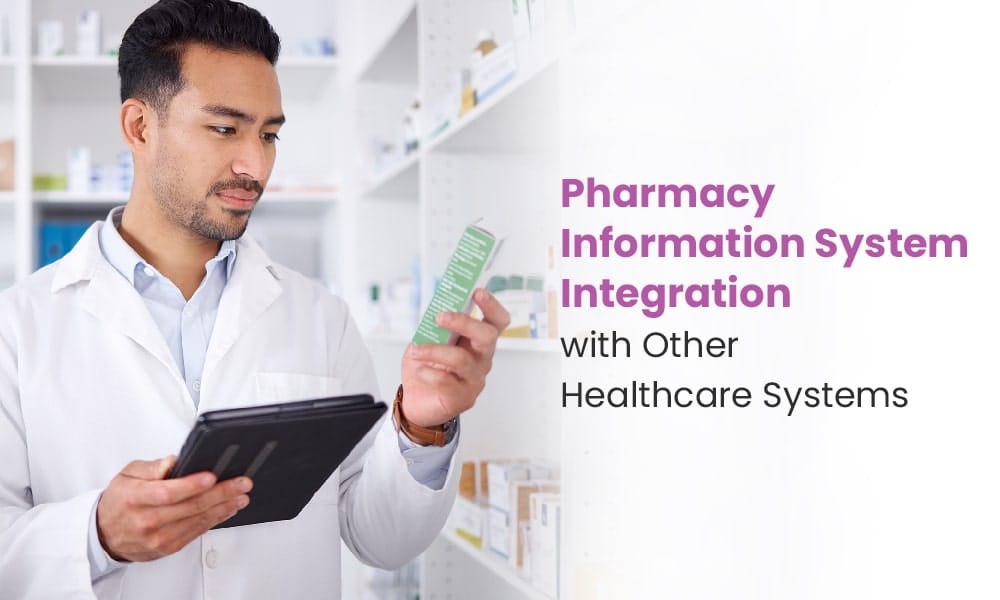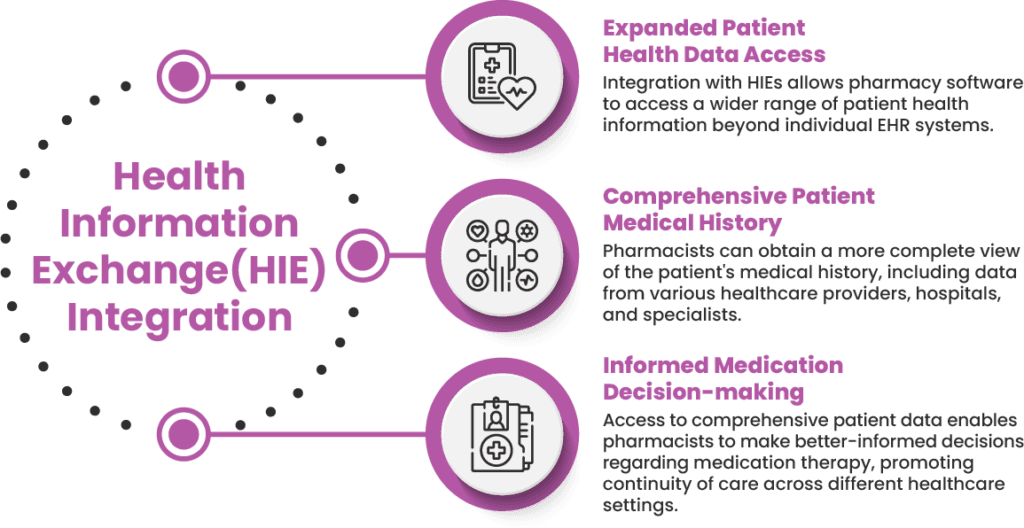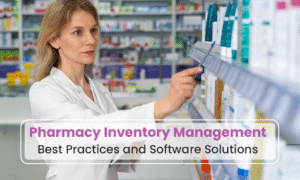
In today’s digital era, every healthcare platform requires digital management assistance to perform its day-to-day tasks smoothly that’s why the integration of Pharmacy Information System with other software is required. Handling a pharmacy is again a daunting task which essentially needs a proper software suite to manage the medicinal requirements of a hospital or that could effortlessly manage their accounts and management.
In this blog, we will try to portray how best pharmacy software integrates with other hospital systems like electronic health records (EHR) systems, health information exchanges (HIE), and other healthcare technologies to facilitate seamless communication and patient care coordination would be helpful for a hospital to explore more facilities in patient care.
Pharmacy Information System in Integration with Other Healthcare Systems
In the healthcare world, it’s super important for different parts of the healthcare system to stay connected with each other. This helps make sure patients get the best care possible. The best pharmacy software is like the glue that sticks everything together. It helps pharmacies work smoothly with other systems, like electronic health records (EHR), health information exchanges (HIE), and other healthcare tools.
Now, let’s see why this teamwork is so helpful for pharmacies and patients.
- Connecting with Electronic Health Records (EHR):
It helps pharmacists quickly access important info about a patient’s health, like their meds and allergies.
- Linking to Health Information Exchanges (HIE):
It’s like having a big library of patient info. Pharmacists can see more details about a patient’s health, even if they’ve been to different doctors or hospitals.
- Working with Other Healthcare Tools:
Best pharmacy software can also team up with other helpful tools, like apps that remind patients to take their medicine or machines that help keep track of inventory.
These connections make life easier for pharmacists, allowing them to provide better care and ensuring patients get the right medicine at the right time.
Electronic Health Records (EHR) Integration
One of the primary integrations for software used in pharmacy is with electronic health records (EHR) systems. EHRs contain comprehensive patient health information, including medication histories, allergies, and lab results. By integrating with EHR systems, pharmacy management software allows pharmacists to access up-to-date patient information directly from the patient’s electronic record.
This integration streamlines the prescription fulfilment process, enabling pharmacists to verify prescriptions more accurately and efficiently. Pharmacists can also identify potential medication interactions or allergies, ensuring patient safety. Additionally, EHR integration enhances communication between healthcare providers, enabling seamless coordination of care and medication management.

Health Information Exchange (HIE) Integration
Health Information Exchanges (HIEs) are platforms that facilitate the sharing of patient health information among different healthcare organizations. Software used in pharmacy can integrate with HIEs to access a broader range of patient health data beyond what is available within individual EHR systems.
By connecting Pharmacy Information System to HIEs, pharmacies can access a more comprehensive view of the patient’s medical history, including information from other healthcare providers, hospitals, and specialists. This comprehensive data access allows pharmacists to make more informed decisions regarding medication therapy and ensures continuity of care across different healthcare settings.

Integration with Purchase and Stock Management:
If efficient software used in pharmacy management gets integrated with a robust purchase and stock management system. It will prove vital for healthcare facilities to ensure smooth operations and optimal patient care. By integrating these systems, healthcare providers can efficiently manage procurement processes, enhance inventory management, and improve cost control. Real-time visibility into medication stock levels and usage patterns enables proactive stock replenishment. It also minimizing the risk of stockouts and ensuring essential medications are always available for patients. Detailed reporting and analytics empower decision-makers to optimise purchasing strategies. You can maintain regulatory compliance, and enhance patient safety, contributing to a more efficient and effective healthcare environment.

Pharmacy Information System Integration with Other Healthcare Technologies
In addition to EHRs and HIEs, software used in pharmacy can integrate with various other healthcare technologies. You can further enhance patient care coordination with the integrated experience. For example, integration with telehealth platforms enables pharmacists to provide remote medication counselling and monitoring services to patients. Integration with medication adherence tools allows pharmacists to track patient adherence and intervene proactively when necessary.
Furthermore, integration with medication management systems and automated dispensing cabinets streamlines medication dispensing and inventory management processes within pharmacies, improving efficiency and reducing errors.
Conclusion
In conclusion, integration of software used in hospital pharmacy with electronic health records, and other healthcare technologies is essential to facilitate seamless communication. On the other hand It should provide patient care and coordination. These integrations empower pharmacists with access to comprehensive patient health information, enabling them to deliver safe, effective, and personalized medication therapy to patients.









